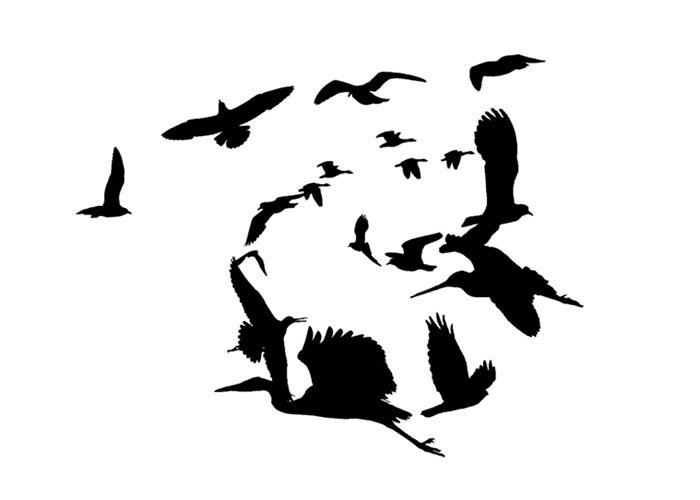Subjective mapping of Hungary
Autumn 2010 — Autumn 2011
This Atlas came into being at the initiative of Attila Bujdosó at Kitchen Budapest, and through the joint efforts of some 50 contributors and a young Hungarian graphic designer, Aliz Borsa. All contributors were selected through an open call. The only condition of participation was experience in visual communication and self-expression. In the course of selection we aimed at having a group of varied knowledge and a multitude of backgrounds and professional experiences, thus, in addition to artists and designers, we also invited architects, IT-specialists, sociologists, hackers and public life activists to participate. The invitation was distributed via the wide-ranging network of Kitchen Budapest.
Presentation about the Subjective Atlas project at Kitchen Budapest, by Annelys de Vet, June 2011
Subjective Editions personally met the contributors at a two-week workshop. They contributed not only their ideas, but also their concrete visual works to the Atlas. The workshop was organised at Kitchen Budapest, including most of the brainstorming sessions, discussions and the greater part of the collaborative work. The creative effort was also stimulated by presentations by invited speakers. We received feedback from the external experts – invited on the recommendation of our professional partners – and the audience through two public presentations (one interim and one closing) during the two-week workshop.
Workshop at Kitchen Budapest, 22 November to 3 December 2010
The workshop was followed by the refinement and finalisation of the works. This was done by the contributors independently, or in small teams. Using our online channels of communication the works made at the workshop were presented on a blog. The comment system integrated into Facebook enabled not only the presentation of the creative process and publication to a wider audience, but also the management of feedback from external observers. The designing and final editing of the Atlas took place at the Brussels studio of Annelys de Vet in 2011, and it was completed in Budapest and Gödöllő.
The Subjective Atlas of Hungary was launched at Budapest’ Design market WAMP. The event included a debate with curatorAttila Bujdosó, graphic designer Aliz Borza, initiatior Annelys de Vet and several of the contributors. 14 August 2011
The Subjective Atlas of Hungary was launched in the Netherlands at the Lloyd Hotel Amsterdam during a Hungarian subjective night, 13 October 2011
During Budapest Design Week 2011, Kitchen Budapest media lab and HVG Könyvek publisher organised a workshop in relation to the Subjective Atlas of Hungary. Workshop participants could create custom covers for the atlas, and they could take their custom-printed copies home right away. HVG Kiadó, 1037 Budapest, Montevideo utca 14, 3 October 2011
Annelys de Vet (summer 2011):
“At a quick, unsuspecting glance, the line between nationalism and talking about cultural identity looks hair-fine. As we were putting together this atlas, this conflict was a constant subject of discussion. This book is meant to show cultural diversity and emphasises personal experience as part of the collective. It thereby underlines that culture is not static but in constant motion and different for everyone. This certainly does not mean we cannot talk about shared values or a national spirit. But how we talk about them is always a delicate matter that demands awareness, especially in the present period.
While we were compiling this publication, Hungary took over the presidency of the European Union, and the international newspapers were full of the controversial media law that had taken effect in the country. There was a remarkable contrast in making a book designed to let a broad spectrum of voices be heard at the same time as several Hungarian newspapers were publishing blank front pages in protest at the new law. I wanted to understand the reasoning that had led to the law, and also its possible impact. And so I asked several contributors to the atlas to explain. While their opinions widely varied, I could hardly avoid the conclusion that the law could fundamentally damage freedom of expression. Some people went as far of raising the question whether we could receive a fine for publishing this book because of the subjective and sometimes critical contributions. Others argued that it was not a question at all and that the current government would value the book, also because of the Hungarian qualities it portrays. Wherever truth lies regarding these questions, it was obvious to me that in the current political climate a portrayal of diversity, complexity and multi-vocality was an urgent and supplementary statement.
The situation in Hungary is not an isolated one. A vicious populist wind is blowing through most parts of Europe. Populist politicians are hijacking national symbols and rewriting their countries’ history by appropriating and reconstructing collective narratives.
Each state’s story is told as an exclusive chronicle of and for indigenous people. Those who are not part of the established canon are given no role; the “other” threatens what is “ours” and is best kept out of sight. The empire of fear being built this way systematically reduces collective interest in “the other”.
I believe that as designers and artists, we cannot and should not tolerate this. We, the specialists in images and representation, must be capable of offering constructive alternatives – representations based on personal experiences and observations that stand apart from the control of mass media and their all-encompassing tendencies. Rather than folkloristic clichés that show identity as an unmoving, unchanging fact, we need personal visions based on involvement and disarming stories that express the way cultural identity is always in motion, always influenced from multiple sides, and, in that sense, multicultural by definition.
This is what motivated me to accept Kitchen Budapest’s invitation to make a Hungarian edition to accompany the previous subjective atlases I have produced. In the many unique conversations I went on to have with all the participants, I heard impressive, confusing and beautiful stories; poetic observations, witty inversions and critical analyses of and about Hungary. Together, they exhibit a vast richness marked by visible and tangible traces left by many cultures and ideologies. This book does not tell the story of Hungary but an extensive collection of them. Although a different group of designers and artists would have produced different content, this atlas most certainly sheds light on today’s Hungarian “soul”.
I hope that it will thus contribute to a dynamic cultural dialogue and serve as a gentle and delightful instrument in the battle against the jabbering chorus insisting on a simplified, static version of reality.”
Presentation on subjective atlas series and launch Subjective atlas of Hungary, Annelys de Vet, WIELS, Brussels, 20 October 2011
As part of the Holland Design Days, the works of the Subjective atlas of Hungary were exhibited at Europe Point in Budapest, 6 – 30 November 2011
Acknowledgments
This atlas was initiated by Kitchen Budapest and published by HVG Books. Partners for the project were: E uropean Roma Cultural Foundation, Hungarian Contemporary Architecture Centre, Lumen Photography Foundation, MOME line – design works, PLACCC Festival, The Room, Trafó – House of Contemporary Arts and WAMP – The Hungarian Design Market.
Invited speakers for the workshop included
Gergely Barcza, Béla Frank, Tamás Kovács Budha, Zoltán Kőhalmi, Rudy J. Luijters, Zsolt Molnár, Péter Szoboszlay,
András Tábori, Gábor Bakos, Maxim Bakos, Anna Farkas, Fanni Nánay, Levente Polyák, Katarina ŠeviĆ, Ali Tóth





































